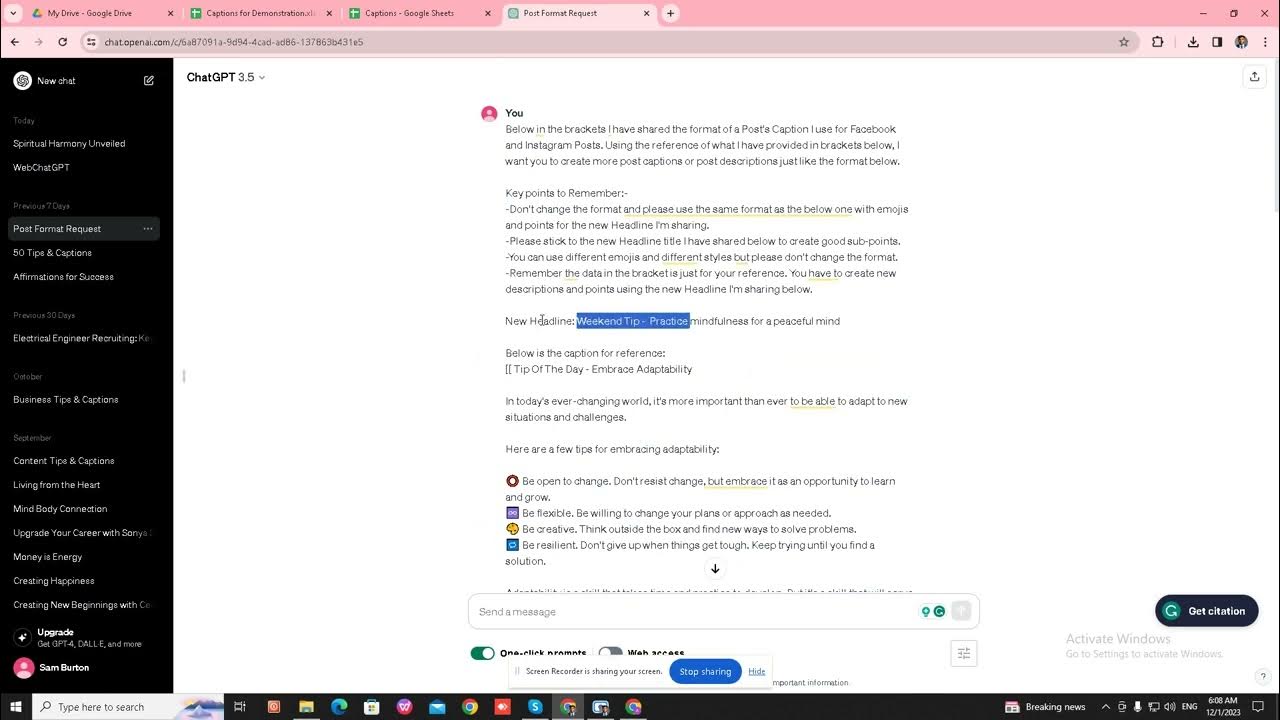MATERI CAPTION // BAHASA INGGRIS WAJIB KELAS XII
Summary
TLDRThis video script offers a comprehensive guide to writing effective captions for social media posts, emphasizing their importance in conveying information and messages. It categorizes captions into six types: identification, group identification, card, summer, expanded, and quotes. The script illustrates each type with examples, highlighting the need for captions to be clear, concise, relevant, and engaging. It also provides tips on crafting good captions, such as using present tense and being descriptive without over-explaining.
Takeaways
- 😀 A caption is a title or explanation appended to a picture, video, illustration, post, or table.
- 📸 Captions can be a single word, phrase, or a complete sentence, and sometimes even a long article-like text, depending on the type of caption.
- 🗣️ The purpose of a caption is to provide information about the image or video and to convey a specific message to the readers.
- 🤔 Not all images or videos require captions, as sometimes the visual content itself is self-explanatory or just meant to embellish.
- 📝 There are six main types of captions: Descriptive, Group Identification, Card Caption, Summative, Expanded, and Quote.
- 👤 Descriptive captions are used to simply name who is in the picture.
- 👥 Group Identification captions are used when the image contains more than one person and describe who they are.
- 🏆 Card captions are the most common and provide details about what is happening in the image.
- 📖 Summative captions give a complete explanation about who is in the picture, what they are doing, when, where, and why.
- 📢 Expanded captions are similar to summative but include quotes or direct statements from individuals or news sources.
- 💬 Quote captions often contain a quote related to the image and are frequently used on social media to convey messages indirectly.
Q & A
What is the primary purpose of a caption?
-A caption is written to provide information about the image, video, or illustration it accompanies, and to convey a specific message or context to the readers.
Can you give an example of a caption?
-An example of a caption is 'Erin Luri, a student of the University of Oxford,' which identifies who is in the picture.
What are the different types of captions mentioned in the script?
-The script mentions six types of captions: Descriptive, Group Identification, Card Caption, Summer, Expanded, and Quote.
How does a Descriptive caption differ from a Group Identification caption?
-A Descriptive caption is used to mention who is in the picture, while a Group Identification caption is used when the image contains more than one person, identifying each individual.
What additional information does a Card Caption provide compared to a Descriptive caption?
-A Card Caption not only mentions who is in the picture but also what they are doing, providing more context about the scene.
What is the role of a Summer caption?
-A Summer caption contains a complete explanation about who is in the picture, what they are doing, when it happened, where it took place, and why it was done.
How is an Expanded caption different from a Summer caption?
-An Expanded caption is similar to a Summer caption but is more detailed and may include a quote or a direct statement from someone involved or a news source.
What is the most common type of caption used on social media?
-The most common type of caption used on social media is the Quote caption, which often contains a quote or a statement related to the image.
What are some tips for writing a good caption according to the script?
-Tips for writing a good caption include using present tense, being brief and clear, making it relevant to the context, and ensuring it captures the reader's attention.
Why is it important for a caption to be relevant to the context?
-A caption must be relevant to the context and the image it describes to accurately convey the intended message and to maintain the coherence of the content.
How can a caption enhance the impact of an image on social media?
-A well-written caption can enhance the impact of an image by providing context, adding depth to the narrative, and engaging the audience on a more personal level.
Outlines

This section is available to paid users only. Please upgrade to access this part.
Upgrade NowMindmap

This section is available to paid users only. Please upgrade to access this part.
Upgrade NowKeywords

This section is available to paid users only. Please upgrade to access this part.
Upgrade NowHighlights

This section is available to paid users only. Please upgrade to access this part.
Upgrade NowTranscripts

This section is available to paid users only. Please upgrade to access this part.
Upgrade Now5.0 / 5 (0 votes)





